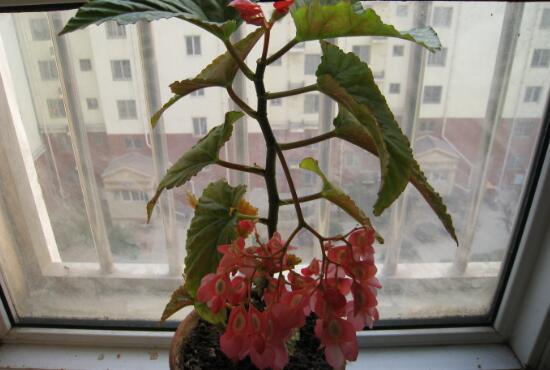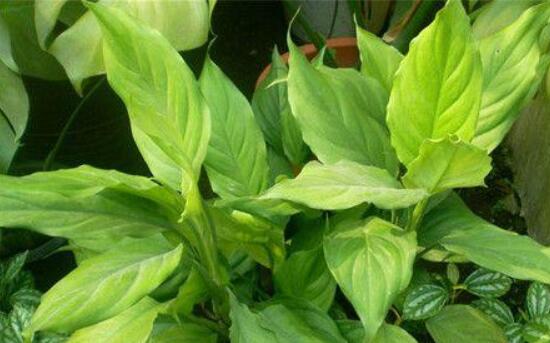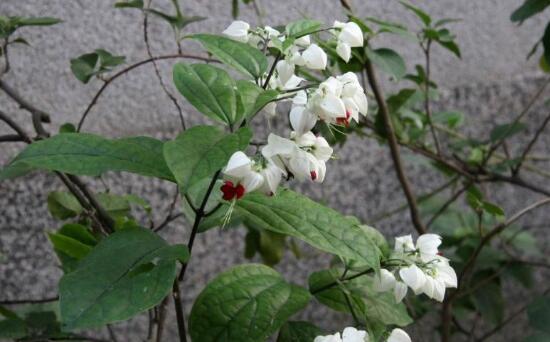Glass begonia leaves yellowing how to do, 6 causes and solutions / light is the key
For glass crabapple, flower friends should be no stranger, it is also known as four seasons crabapple, is an excellent ornamental plant, not only has beautiful flowers, but also has evergreen leaves. Put the glass begonia at home, many people like it, but when its leaves turn yellow, everyone must be very distressed! So, what if the leaves of glass begonia turn yellow? Today, the editor is here to solve this problem for everyone.
First, the leaves of glass begonia turn yellow, look for the cause.

As an excellent decoration plant, the cultivation method of glass begonia is not difficult, but there are many novice, they usually do not follow the method, the leaves of the plant are yellowed, affecting the viewing, at that time, flower friends must be in a hurry! So in order to solve this problem, the editor sorted out six causes of yellowing of glass begonia leaves, and attached the solution, we moved on.
Second, the causes of yellowing of glass begonia leaves and its solutions.
1. Environmental mutation
There are many reasons for the yellowing of glass begonia leaves, but the first thing we should consider is the environment. Because today's potted plants, we all buy online, which can easily lead to a large geographical span, glass begonia can not adapt for a while, and the emergence of leaf yellow symptoms.
Solution: in this situation, we should ask the seller about the growth environment of glass begonia, and then make corresponding changes at home until the glass crabapple is fully adapted. After normal maintenance for a period of time, the leaves of glass begonia will be restored.
2. Improper lighting
Glass crabapple is a kind of plant that likes light and avoids strong light, so too little or too strong light is not good, and it is prone to problems. ① if long-term glass begonia is placed indoors, it will show symptoms of leaf yellowing because it is not exposed to sunlight; at the same time, ②, if the light is too strong, it will also lead to leaf drying and shedding.
Solution: in order to avoid this situation, we put it in the semi-shade to maintain. If the light is not enough, give it light, but the light can not be too strong; if the light is too strong, move to the semi-shade to maintain, and properly watered, slow for a period of time, it will slowly recover.
3. The temperature is too low
Glass crabapple likes a warm environment, in winter, we should move it to indoor maintenance, and maintain a certain temperature. Once the temperature is too low, its growth will become slow, and as a result, the leaves of glass begonia may turn yellow.
Solution: in the cold winter, we should move the glass begonia indoors, or put it in a place with plenty of sunshine, and keep the indoor temperature above 13 ℃.
4. Improper watering
For glass crabapple, water is extremely important, but once too much watering, stagnant water will occur, resulting in rotten roots, resulting in the emergence of leaf yellow. Of course, watering can not be too little, otherwise the leaves of glass crabapple will also appear dry yellow withered phenomenon, thus seriously affecting the ornamental of the plant.
Solution: when ① waters too much, stop watering, and move the plant to a ventilated place to let the water evaporate quickly; or trouble point, the plant changes pot soil; when ② watering is too little, we need appropriate watering to keep the soil moist, but there can be no stagnant water. It is believed that the plant will return to health soon.
5. Excessive fertilization
In the growth process of glass begonia, proper fertilization is beneficial to its growth, otherwise too much fertilization will lead to concave and convex flower leaves, thickening of new leaves and yellowing of old leaves.
Solution: usually, we only need to apply some light fertilizer to the plants. If you apply too much fertilizer, you should suspend fertilization at this time, and then you can choose to change the pot soil, or water frequently, constantly consume the nutrients in the basin, so that the glass begonia gradually return to the normal state.
6. Soil alkalinity.
If the above points can be excluded, then the yellowing of glass begonia leaves may be due to the alkalinity of the soil. It is understood that glass crabapple is a kind of flowers that prefer acidic soil, if the soil is alkaline, or long-term watering of mineral water leads to soil alkali, it will lead to the emergence of leaf yellow.
Solution: at this time, flower friends can use grass to soak water to irrigate glass crabapple, and then apply some ferrous sulfate, and soon the leaves will turn green.
What if the leaves of Phyllostachys pubescens turn yellow? 6 etiology and solution / improper water and fertilizer is the key
As an ornamental plant, dwarf asparagus is undoubtedly very beautiful, whether it is its beautiful plant type, or the bright green short branches and thin leaves, are impressive. But in the process of breeding, the leaves of many flower friends will show signs of yellowing, which is an incomparable headache. So, what if the leaves of asparagus turn yellow? Today, the editor is here to solve this problem for everyone.
1. What if the leaves of asparagus turn yellow?
There are six main reasons for the yellowing of asparagus leaves: if it is a new potted plant, it may be not suitable for short-term yellowing of leaves, careful maintenance; too strong light, moved to the semi-shade to recuperate; water and fertilizer problems, it is necessary to reasonably water and fertilize, timely change pot soil to replant; frostbite in winter, temperature maintenance; if poisoned, change the basin in time.
2. the causes and solutions of the yellowing of the leaves of Phyllostachys pubescens.
1. Environmental mutation
With regard to the reason for the yellowing of asparagus leaves, if it is a new potted plant, it may be caused by the failure to adapt to the environment. Nowadays, many of the potted plants of flower friends are purchased online, which may lead to large geographical cross-clothing, and dwarf asparagus may not be able to adapt to the yellow leaves because of great changes in the growth environment.
Solution: if it is a newly bought potted plant of asparagus, the appearance of yellow leaves is actually very normal, we only need to follow the cultivation method of asparagus, and the plant will recover after a period of time.
2. The light is too strong
Dwarf bamboo likes the semi-shady environment, it avoids strong light and pays attention to shading in time when maintaining in summer, otherwise, once it is directed by strong light, it will cause branches and leaves to wither and yellow.
Solution: when the light is very strong, move the potted plant to a cool place indoors in time. After it slows down, water and spray water timely to increase air humidity.
3. Overwatering
Dwarf bamboo likes the wet environment, but it avoids stagnant water and should follow the principle of "no dry, no watering" when watering. Once too much watering leads to stagnant water in the basin soil, it is easy to have rotten roots. While the roots are rotten, it is not surprising that the leaves of Phyllostachys pubescens turn yellow.
Solution: if it is found in time, the root rot is light, change the pot soil to cut the root, and then plant it again; if it is not found in time, the root rot is very serious, then there is no way to throw away the plant directly, or choose the surviving branches as cuttings for cutting propagation.
4. Improper fertilization
Excessive fertilization: dwarf asparagus likes fertilizer, sufficient nutrients can make it grow luxuriantly. However, when fertilizing dwarf asparagus, do not fertilize too much or too thick each time, otherwise it will cause poor plant growth, yellowing leaves and even death. Solution: pour water to dilute the fertilizer, or change the pot soil to cut off the roots and replant them.
Insufficient fertilization: on the contrary, if the potted soil of asparagus is barren and the flowers are fertilized in time, its leaves will turn yellow due to lack of nutrients. Solution: timely fertilization, but when fertilizing dwarf asparagus, thin fertilizer should be applied frequently.
5. The temperature is too low
Dwarf bamboo likes a warm environment, it is not cold-resistant, if the temperature is too low in winter, it will be frostbitten, resulting in withered and yellow leaves.
Solution: in winter, the dwarf bamboo pot should be moved to indoor maintenance in time, and the room temperature should be kept above 12 ℃, and placed near the south window, proper watering should be controlled.
6. Plant poisoning
If we can rule out the above points, then the yellow leaves of asparagus may be poisoned! It is understood that the dwarf bamboo is afraid of smoke and dust, if you put the potted plant in the kitchen, it is surrounded by smoke and dust, and its branches and leaves are easy to turn yellow over time.
Solution: move the pot to a ventilated place in time, water it timely, give it enough astigmatism, and it will recover after a period of time. In fact, when the plant is too large, the flowerpot is too small, or when you get sick and grow worms, dwarf asparagus is also prone to yellow leaves, so we should not be careless.
What if the leaves of the white crane taro turn yellow. 6 causes and solutions / pay attention to light, water and fertilizer
White crane taro, also known as plain sailing, is a beautiful and ornamental flower, deeply loved by flower friends. In daily life, there are many people who raise white taro, but in the process of breeding, many flower friends' plants will appear yellow leaves. So, what if the leaves of the white crane taro turn yellow? In this regard, the editor summed up 6 causes, let's go and have a look!
First, the white crane taro leaves turn yellow, look for the cause
As a common flower, the culture method of white crane taro is not difficult, but there are many novice, many of them do not know how to raise, in the light, water and fertilizer do not know the depth, the result is slightly different, the plant will appear the symptom of leaf yellow. As for the white crane taro leaves yellow how to do, we first have the cause, and then for the solution, the specific we go on to look at.
Second, the causes of yellowing of white crane taro leaves and its solutions.
1. Improper lighting
When it comes to the cause of yellowing of white crane taro leaves, the most common reason is improper lighting. White crane taro likes light, but it avoids strong light, once it is directly exposed to the sun, the plant will be uncomfortable due to rapid changes in the environment, resulting in leaf yellow symptoms.
Solution: in summer, to avoid strong light exposure, once the exposure leads to leaves yellowing, quickly take the basin to the shade, and then water, careful maintenance for two days can be solved.
2. Temperature discomfort
In addition to light, the low or high growth temperature is also one of the main reasons for the yellowing of taro leaves. It is understood that the best growth temperature of white crane taro is 22-28 ℃. Once the temperature is lower than 5 ℃ or higher than 35 ℃, the plant is prone to yellow leaves.
Solution: when the temperature is low, set the room temperature to more than 15 ℃; when the temperature is high, do the temperature treatment, and timely watering to accelerate the cooling.
3. Overwatering
White crane taro likes a humid environment, but it avoids stagnant water. once it is watered too much, it will affect the respiration of plant roots. On the other hand, the root of the white crane taro does not breathe smoothly, which leads to root rot, yellow and black leaves.
Solution: take the white crane taro to the ventilated place to blow, wait for the basin soil to dry and take it back to the room for careful maintenance, and then water it normally. Specifically achieve: water every 2-3 days in summer and every other week in winter. Each time you can't just water the skin, you should water it thoroughly at once.
4. Improper fertilization
After watering, let's talk about fertilization. it is also one of the reasons why the leaves of Amorphophallus are yellowed. White crane taro likes fertilizer and needs sufficient nutrients in the process of growth, but once it is fertilized too much, it will be counterproductive, its leaves will be yellow and wrinkled, and in serious cases, it will cause rotten roots and even death.
Solution: timely irrigation to dilute fertilizer and flow out from the bottom of the basin; in addition, fertilization is not difficult. In the growing season of young plants, flower friends apply 10 times of rotten liquid fertilizer every 15 days and compound fertilizer every 30 days to achieve this top. the yellowing of white crane taro leaves will be solved.
5. The basin has not been changed for a long time
The reason why the leaves of the white crane taro turn yellow may also be that you haven't changed the pot since you bought the flowers. Because white crane taro in the early stage of growth, nutrition is absorbed from the soil, for a long time, the soil nutrition will be reduced, resulting in malnutrition, leaves yellowing is very common.
Solution: if it is a basin soil problem, it is very simple to solve, just change the basin soil directly. Dump the old soil and replace it with loose, moist, aerated soil.
6. Occurrence of insect pests
In addition to the above, the yellowing of white crane taro leaves may also be known by insect pests. It is understood that if there are mites pests harm, the leaves of the white taro show wilting, gloss desalination, yellow wilt and other adverse symptoms.
Solution: special mites can be sprayed for control, specific agents can refer to the disease and insect pest control of taro.
As a novice, when many people first bought the white crane taro, its leaves were still very green, but after a period of time, the leaves began to turn yellow, in fact, you failed to achieve the position. As long as we follow the above requirements, it is not a thing for the leaves to turn yellow. With regard to the yellowing of the leaves of the white crane taro, the editor has introduced it here, hoping to bring help to everyone.
- Prev

Guangdong evergreen leaves yellowing how to do, reasonable water and fertilizer / control temperature / change basin soil
Guangdong evergreen, a beautiful foliage plant, whose leaves are green and evergreen all the year round, is very ornamental at home. But in the process of breeding, due to various reasons, many flower friends of Guangdong evergreen will appear yellow leaves, then Guangdong evergreen leaves yellow how to do? In this regard, the editor summarized seven reasons.
- Next

What about the yellowing of dragon bead leaves? cause analysis of dragon spitting pearl leaf yellow / focus on water and fertilizer
As a beautiful flower, Longtuzhu gets its name because it is shaped like a dragon spitting beads. It is deeply loved by flower friends and is potted at home by many people. And the beauty of dragon spitting beads, in addition to beautiful flowers, its dense and symmetrical green leaves are not to be underestimated. So when the dragon spits the pearl leaves yellow, everyone must be in a hurry! that
Related
- Fuxing push coffee new agricultural production and marketing class: lack of small-scale processing plants
- Jujube rice field leisure farm deep ploughing Yilan for five years to create a space for organic food and play
- Nongyu Farm-A trial of organic papaya for brave women with advanced technology
- Four points for attention in the prevention and control of diseases and insect pests of edible fungi
- How to add nutrient solution to Edible Fungi
- Is there any good way to control edible fungus mites?
- Open Inoculation Technology of Edible Fungi
- Is there any clever way to use fertilizer for edible fungus in winter?
- What agents are used to kill the pathogens of edible fungi in the mushroom shed?
- Rapid drying of Edible Fungi

